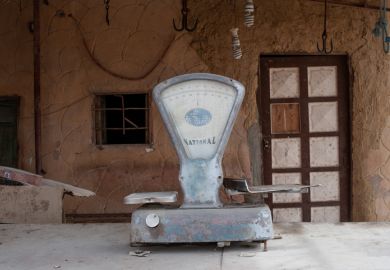Since the 2012 Review of Higher Education Access and Outcomes for Aboriginal and Torres Strait Islander People, there has been a significant focus in Indigenous university education on the creation of the human capital needed for sustained change in outcomes in Indigenous Australia. It enabled a stronger focus on Indigenous professional education and strengthened the accountability of university leaders for Indigenous outcomes.
This approach saw significant gains. Between 2006 and 2021, Indigenous student enrolments at Australian universities grew by 152.6 per cent. Over this time, the number of Indigenous PhD student enrolments more than doubled to 766 students. Even more impressively, Indigenous enrolment in postgraduate degrees more generally has more than quadrupled, from 819 students in 2005 to 3,775 in 2021.
Nonetheless, Indigenous student success continues to lag educationally privileged cohorts, as it does for other equity groups in Australia.
The newly published Australian Universities Accord sets a new goal for institutions. The accord recommends increasing the current participation target of Indigenous Australians from 2.1 per cent to 3.3 per cent of the total student cohort by 2035. That is a laudable ambition, but it will not be realised without a fundamental transformation of the relationship between Indigenous Australia and universities.
Let’s start with enrolment. International evidence has shown that enrolment processes have a differential and negative impact on students from equity cohorts. As we move forward, universities need to replumb their systems and humanise them. In the Australian case, we are primarily talking about the Australian Tertiary Education Rank (ATAR), which is used to assess the achievement of school-leavers. This was established when universities primarily recruited from educational elites, so the idea that some students might have more barriers to achievement than others was never considered. Recently, some jurisdictions have implemented alternative methods to complement the ATAR, such as the Schools Recommendation Program in Tasmania. But both methods still have inbuilt biases in relation to Indigenous students. We must do better.
Once Indigenous students are enrolled, the attainment gap between them and other students can be closed if universities develop scalable interventions that lift the success for all equity cohorts. For instance, the analysis of academic risk across the student journey can be used by course advisers to provide students with options at the point where risk occurs – before negative outcomes materialise.
But we also need a deeper cultural alignment between Australian universities and Indigenous culture. Currently, Australia’s higher education institutions continue to be largely culturally frozen museums of our colonial past. Graduation rituals are drawn solely from European medieval tradition. University brands continue to be imperial in their origin. And Australian university governance and executive leadership is, with rare exceptions, full of white Australians.
This is why no university in Australia seems able to engage fully with the country’s 60,000 years of cultural knowledge and language traditions in a way that enriches our institutional culture. University leaders need to focus more deeply on the role Indigenous knowledges can play alongside dominant Western-derived knowledge systems.
For instance, my Palawa ancestors passed to me an oral tradition of a time when Lutrawita (Tasmania) became an island. At this time, there was also a southern polar star – a stationary southern marker, much like its northern cousin. This was never taken seriously by the men who colonised our island until recently, when a team of astronomy and Indigenous knowledge specialists dated these oral traditions to 14,000 years ago. Since then, a wobble in the earth’s axis, which occurs every 26,000 years, has relocated this sentinel of the night sky.
Yet Indigenous knowledges are still only beginning to be embraced by Australian universities. To go deeper, we need to foster a new philosophy to create a method for the integration of Indigenous knowledges to transform Western knowledges, including the sciences. This will not be realised without changes in national research policy and new approaches to academic publishing, as well as to university management.
The Universities Accord calls out the problem of white-dominated leadership, but it remains to be seen whether the sector moves from its current passive complicity to a more active investment in the development of the leadership pipeline for Indigenous Australians.
Moreover, the accord is very narrow in linking the purpose of engaging with Indigenous knowledge to closing the gaps in Indigenous outcomes such as in health, justice, or education. It is not wrong to think that a wider embrace of Indigenous knowledge by universities is important to addressing Indigenous disadvantage, but we do not confine our arguments for academic gender equity to improving outcomes for women. Gender equity also has value in fostering the diverse perspectives that can drive knowledge and understanding forward.
The same is true of Indigenous knowledges. They can help Australian universities overcome the limitations of a white colonial imagination and contribute to solving global challenges, such as climate change, rising international inequality and the global volatility connected to both.
The purpose of Indigenous participation in higher education should not be confined to fixing Indigenous problems. The purpose of Indigenous participation in university education is to change the world.
Ian Anderson is deputy vice-chancellor (academic) at the University of Tasmania and former deputy secretary of Indigenous affairs in the Australian Department of Prime Minister and Cabinet.
Register to continue
Why register?
- Registration is free and only takes a moment
- Once registered, you can read 3 articles a month
- Sign up for our newsletter
Subscribe
Or subscribe for unlimited access to:
- Unlimited access to news, views, insights & reviews
- Digital editions
- Digital access to THE’s university and college rankings analysis
Already registered or a current subscriber? Login








